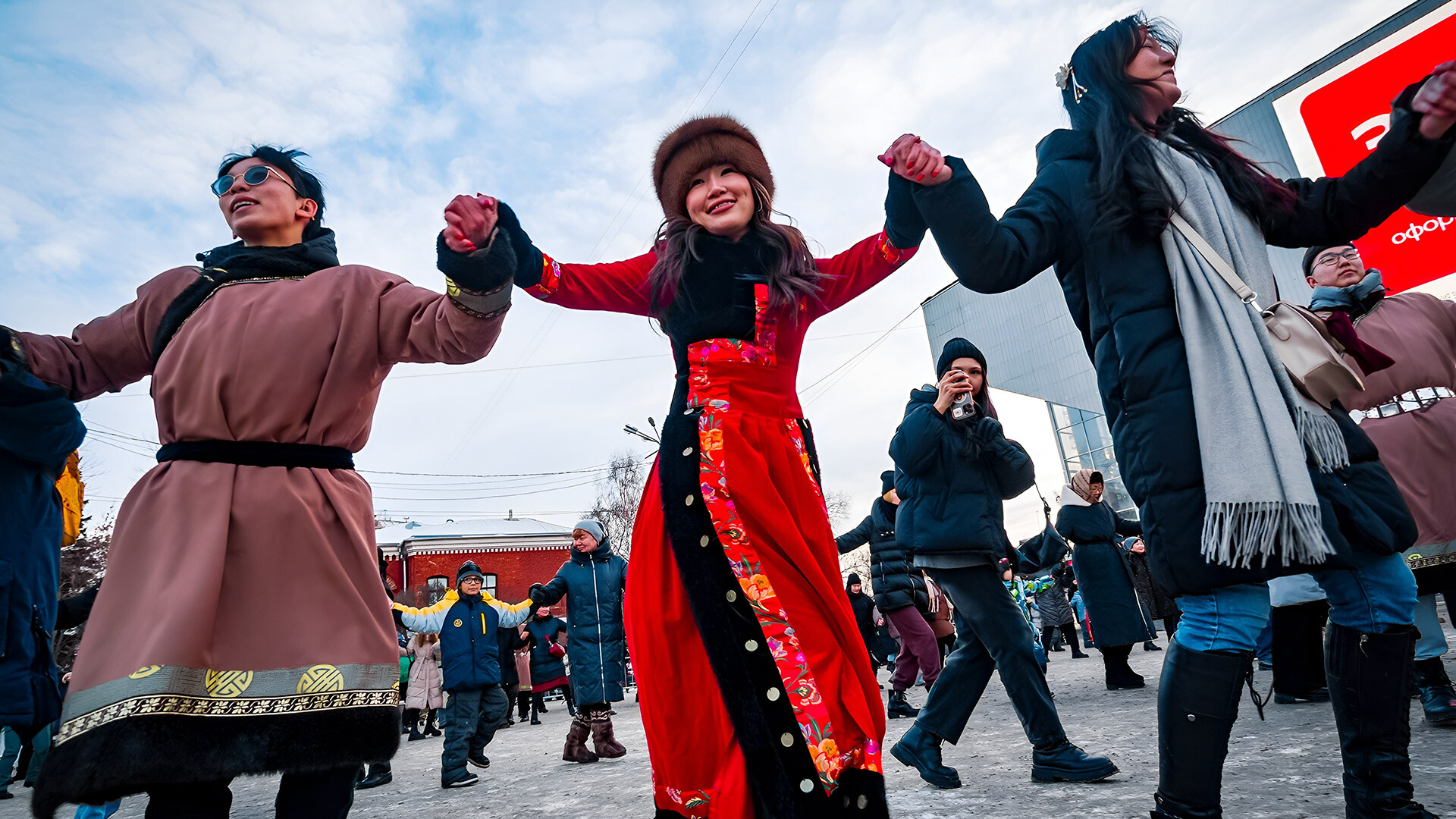
Everybody dance!
Pavel KuzmichevPeople were gathering on one of the central squares of Irkutsk. Here and there flashed bright Buryat dresses, tall hats covered with fluffy fur, while congratulations were heard from everywhere. "Sagaan haraar! Sagaalganaar! Happy White Month!"

And then, hundreds of people spun a rousing circle dance called ‘yokhor’. It's believed that the more people that take part in the dance, the more prosperous the year will be.

In datsans there is a place for hanging "flags of the wind of good luck". The colors symbolize the year of birth (Tiger, Horse, Dragon and so on).
Pavel KuzmichevPeoples practicing Buddhism celebrate not only the "official" New Year on January 1, but also their own, the date of which they calculate according to the lunar calendar. In different regions, it is called in its own way - ‘Sagaalgan’ (Buryats and Mongols), ‘Shagaa’ (Tuvinians), ‘Tsagan-Sar’ (Kalmyks), ‘Chaga Bairam’ (Altaians). This year, ‘White Month’ fell on February 10 (and coincided with the Chinese New Year, which happens rarely) for the Buryats, Tuvinians and Kalmyks. Altai ‘White Month’, meanwhile, fell on February 17. The symbol of the year was the Green Wood Dragon.
In fact, it symbolizes the onset of the first spring new moon. This is the time when winter ends and nature awakens.
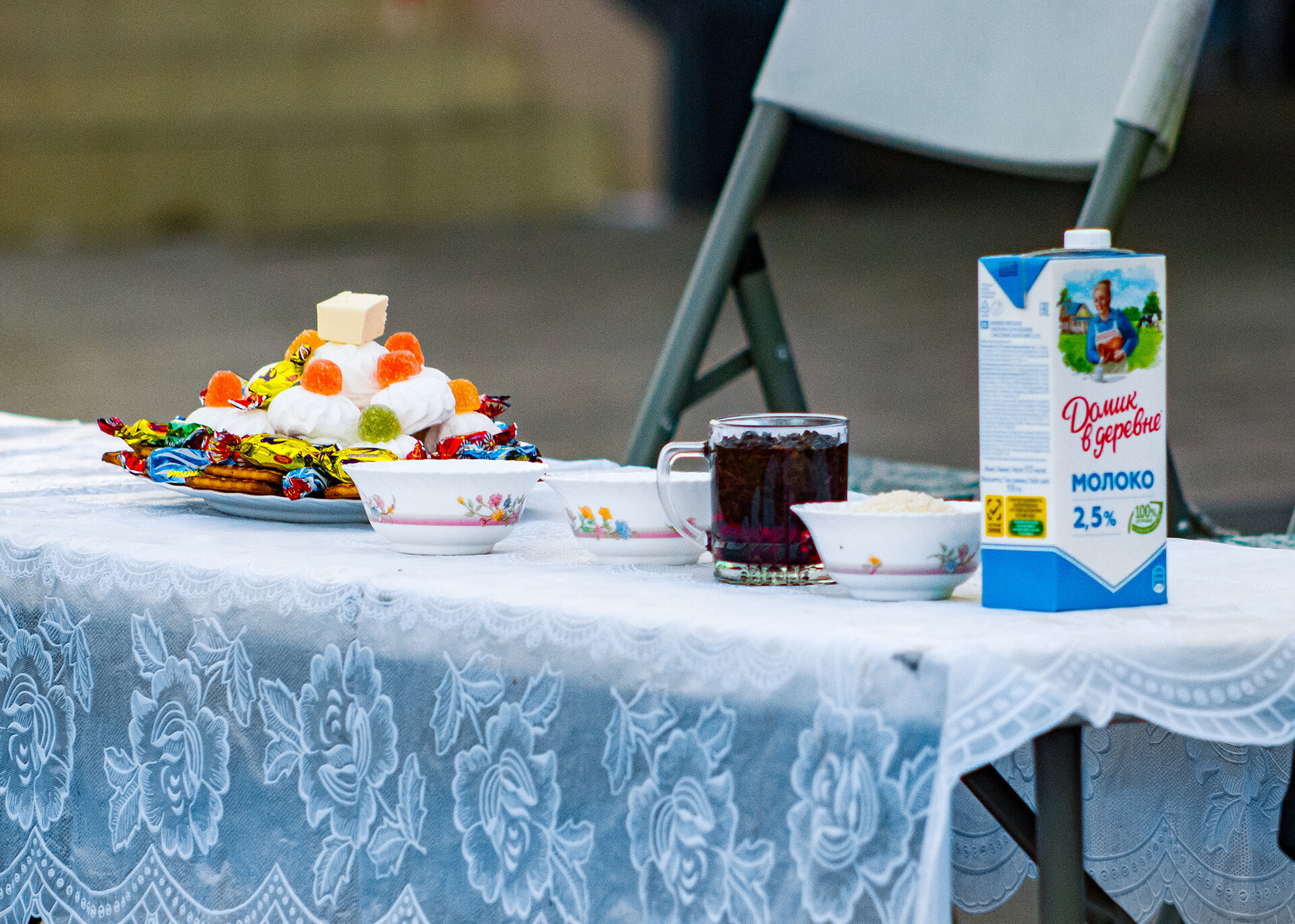
White food must be on the table during Sagaalgan celebrations. And also white food is used by lamas for rituals.
Pavel KuzmichevUntil the 14th century, the ‘White Month’ was celebrated in the fall, during the preparation of food for winter, when dairy food appeared in abundance (Buryats call it ‘Sagaan Edeen’). But then, under the influence of Chinese astrology (which designates each year by any of the 12 animals) it was moved to the end of winter. The celebration of ‘Sagaalgan’ was also influenced by the spread of Buddhism. Buddhist teachings came to Siberia from Mongolia in the early 17th century and became widespread in Zabaikalsky Krai, Tyva, Altai and Buryatia.
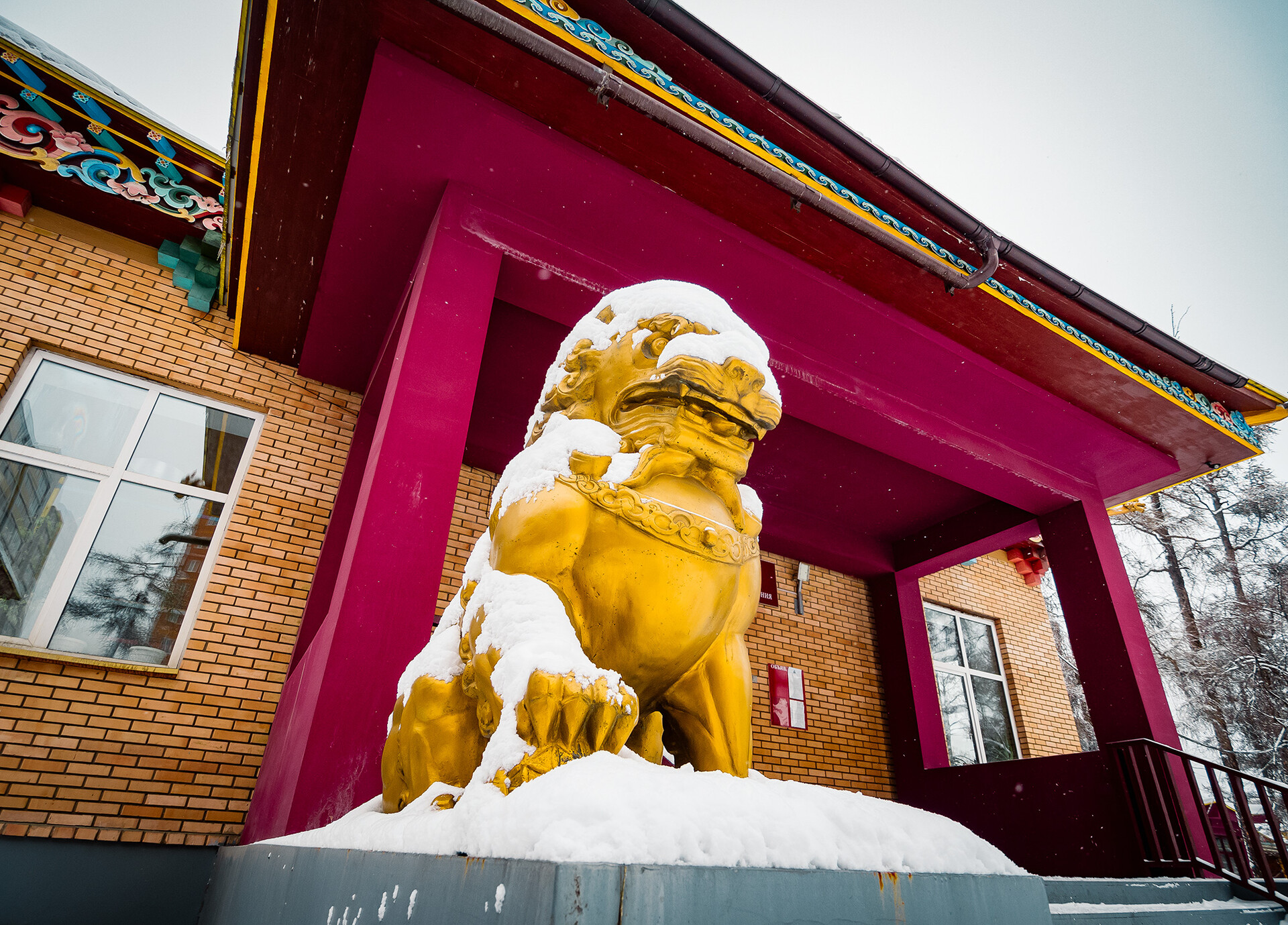
A lion guards the entrance to the datsan.
Pavel KuzmichevA large number of Buryats also live in Irkutsk Region (where the Ust-Ordyn Buryat District is located) and, there, you can see both traditional temples-datsans, and a large number of cafes with poses (or ‘buuzas’) and get acquainted with the traditions of these Siberian people.
‘Sagaalgan’, which literally means ‘White Month’, is one of the two most important holidays in Buryat culture, along with ‘Surkharbaan’ (we wrote about it here) in the summer.
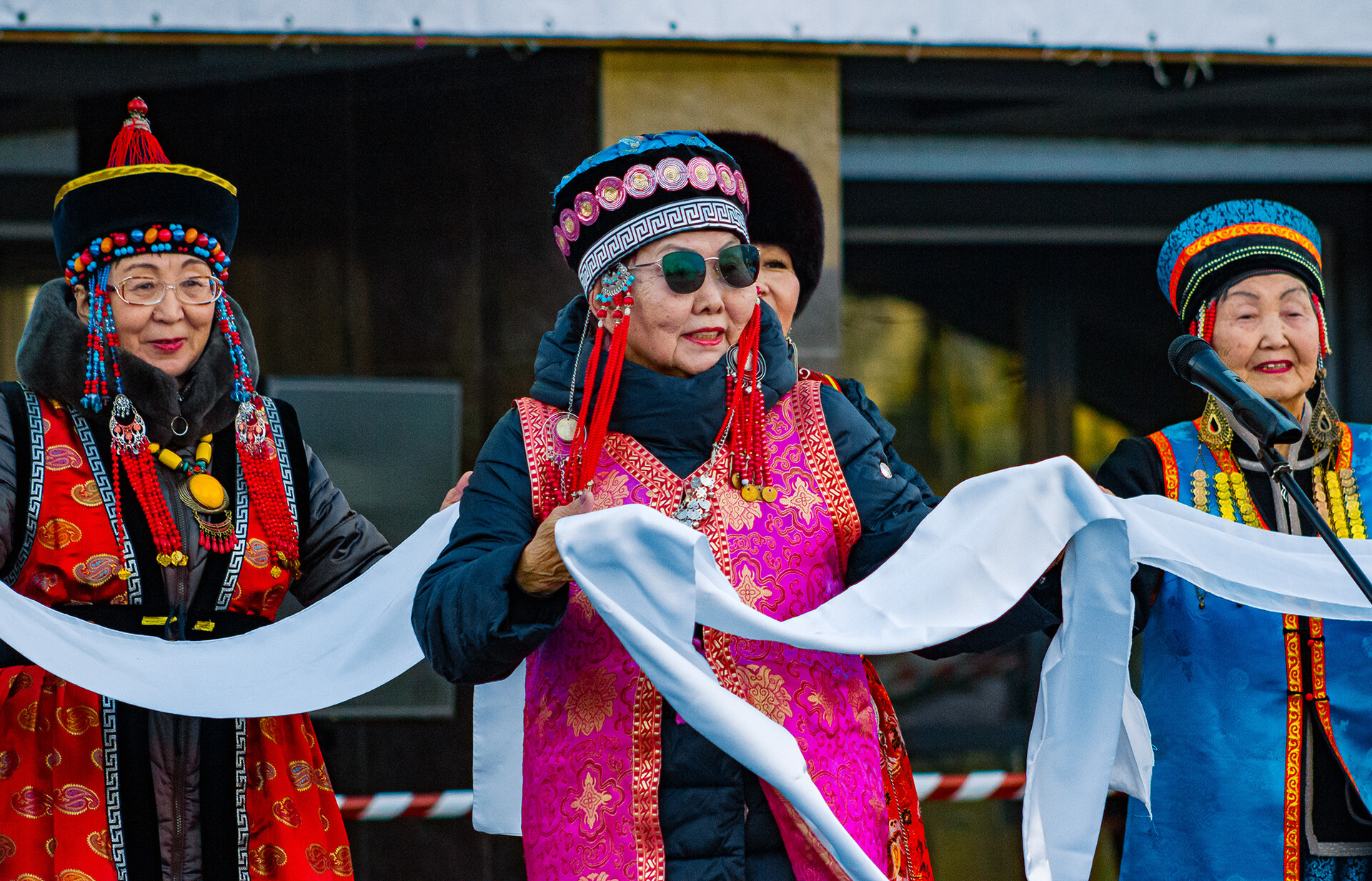
Such white scarves are a traditional gift for Sagaalgan.
Pavel KuzmichevThe fact that nature was slowly reviving after winter, we could see for ourselves. Usually, February in Irkutsk is a cold month, with temperatures averaging around minus 20 degrees Celsius (-4°F). But, when we arrived for the ‘White Month’ celebrations, the bright spring sun suddenly appeared and the temperature amazingly stayed around plus 5 degrees Celsius (41°F) for a couple of days. Can you imagine such metamorphoses in the heart of Siberia?
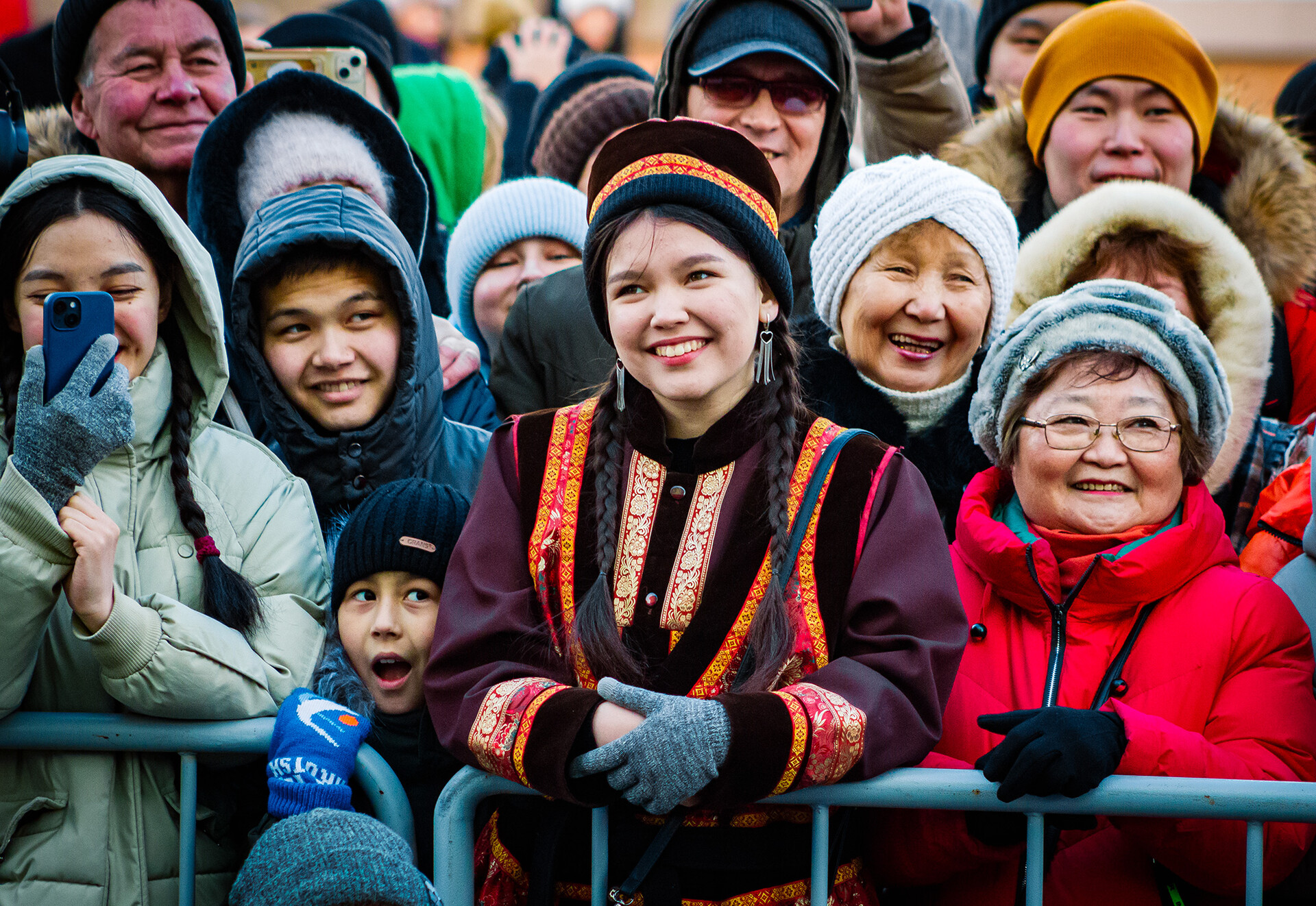
‘Sagaalgan’, like the "official" New Year, is considered a family holiday in Russia. For 30 days, one is supposed to visit relatives and friends, to organize tea parties with 'boovy' donuts and ‘buuzas’ (poses), as well as give each other small gifts (usually silk scarves called ‘khadaks’).
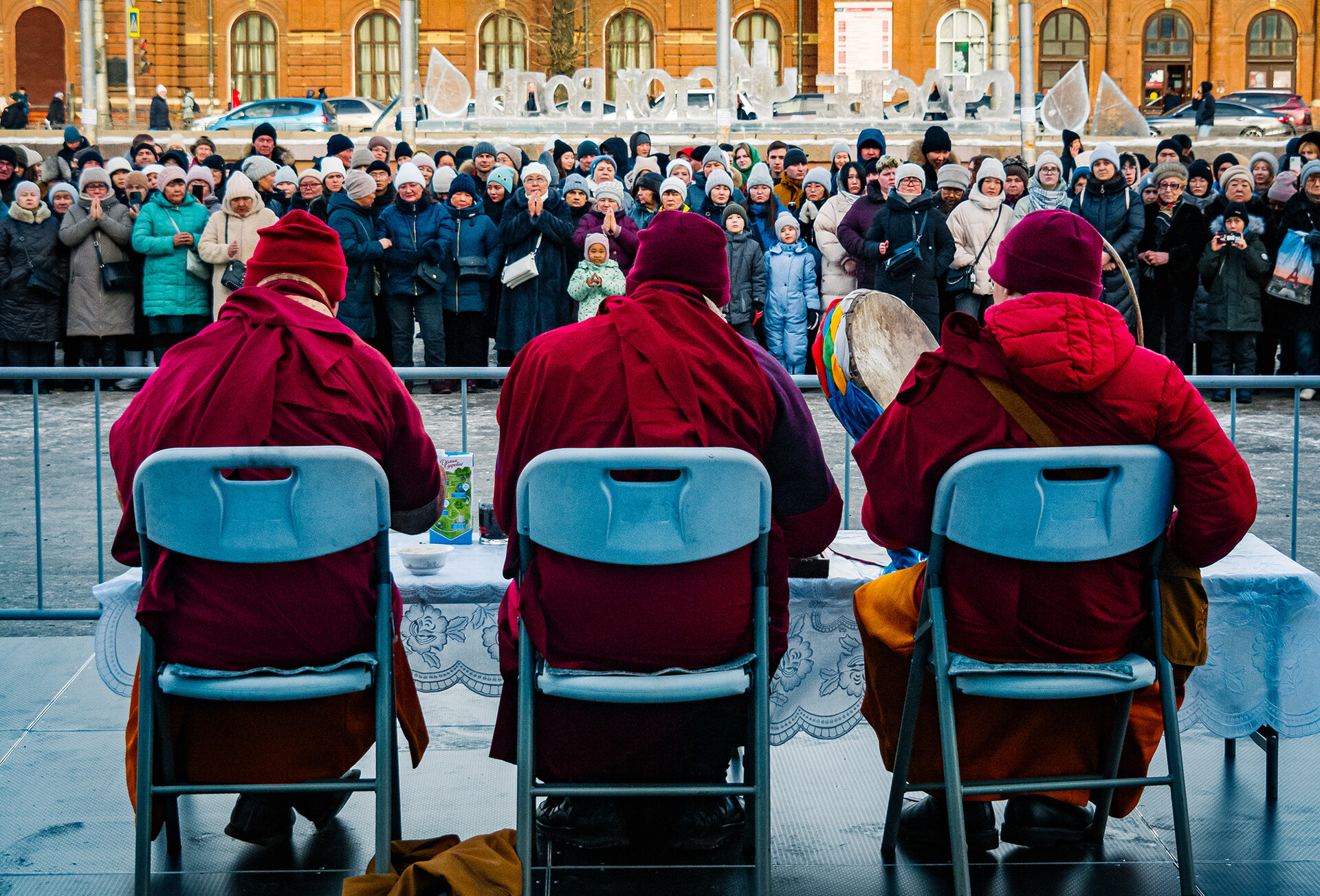
Lamas of Irkutsk datsan.
Pavel KuzmichevBut, these days, it is celebrated not only at home. In Irkutsk, it has already become a city-wide holiday, which can be attended by anyone. It is organized by the Center of Culture of Indigenous Peoples of Baikal Region with the support of the Ministry of Culture of Irkutsk Region. "The main thing is to come with pure thoughts and an open soul and then the year will bring good luck," the Center says.

First, the lamas of the Irkutsk ‘datsan’ addressed the guests with wishes of prosperity and read prayers. Wishes of prosperity and prosperity were repeated by Irkutsk Buryat folk singers with songs and dances.
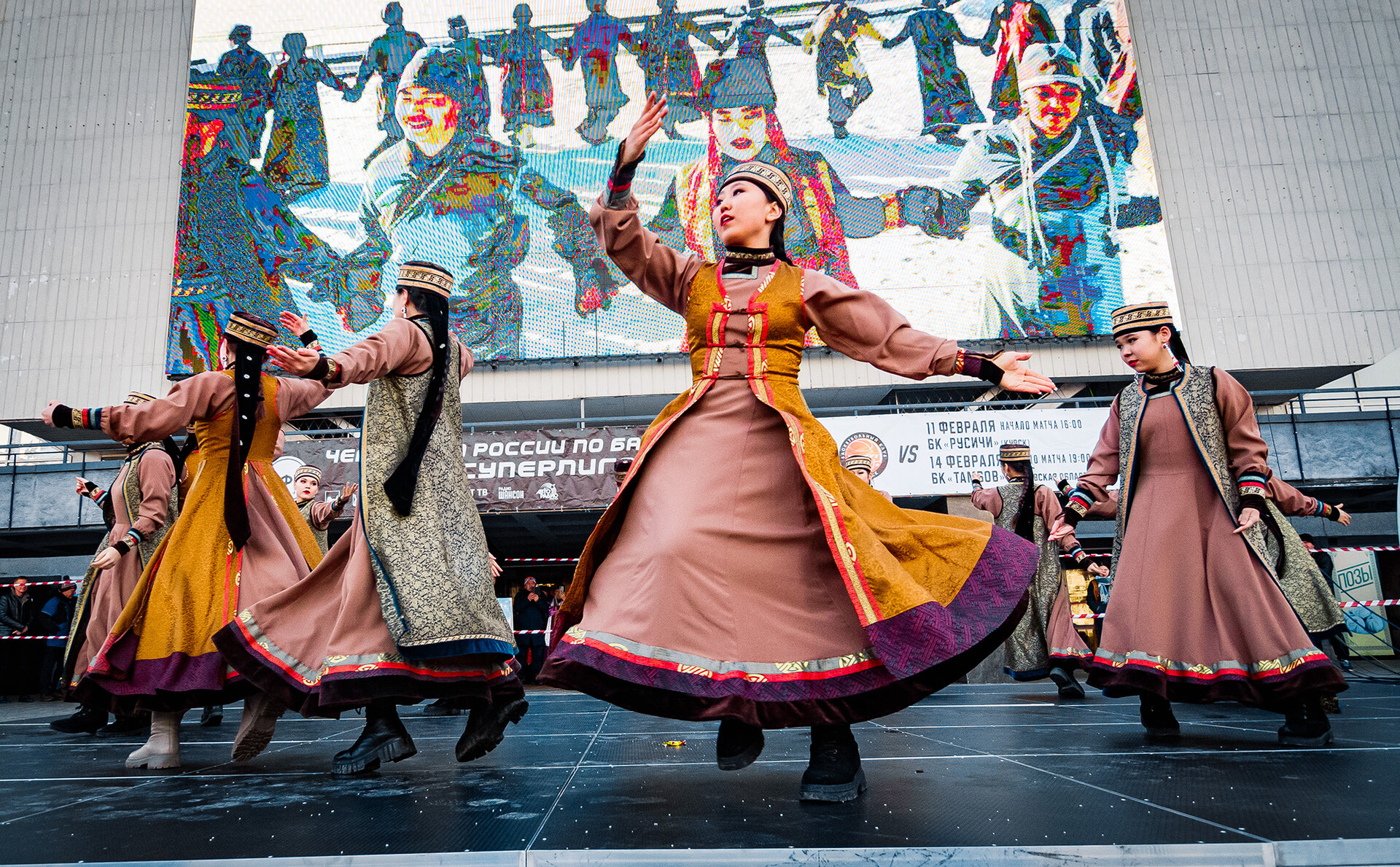
Then, Buryats introduced everyone to their traditional bone games known as ‘Shagai Naadan’ and demonstrated the skill of breaking an animal spine bone with bare hands (we also saw these folk sports in summer at ‘Surkharbaan’).

The culmination of the holiday is a giant ‘yokhor’ circle dance. Just imagine: hundreds of people take each other's hands and move around in a circle jumping up and down, speeding up and slowing down and chanting: "Yokhor, yokhor!"
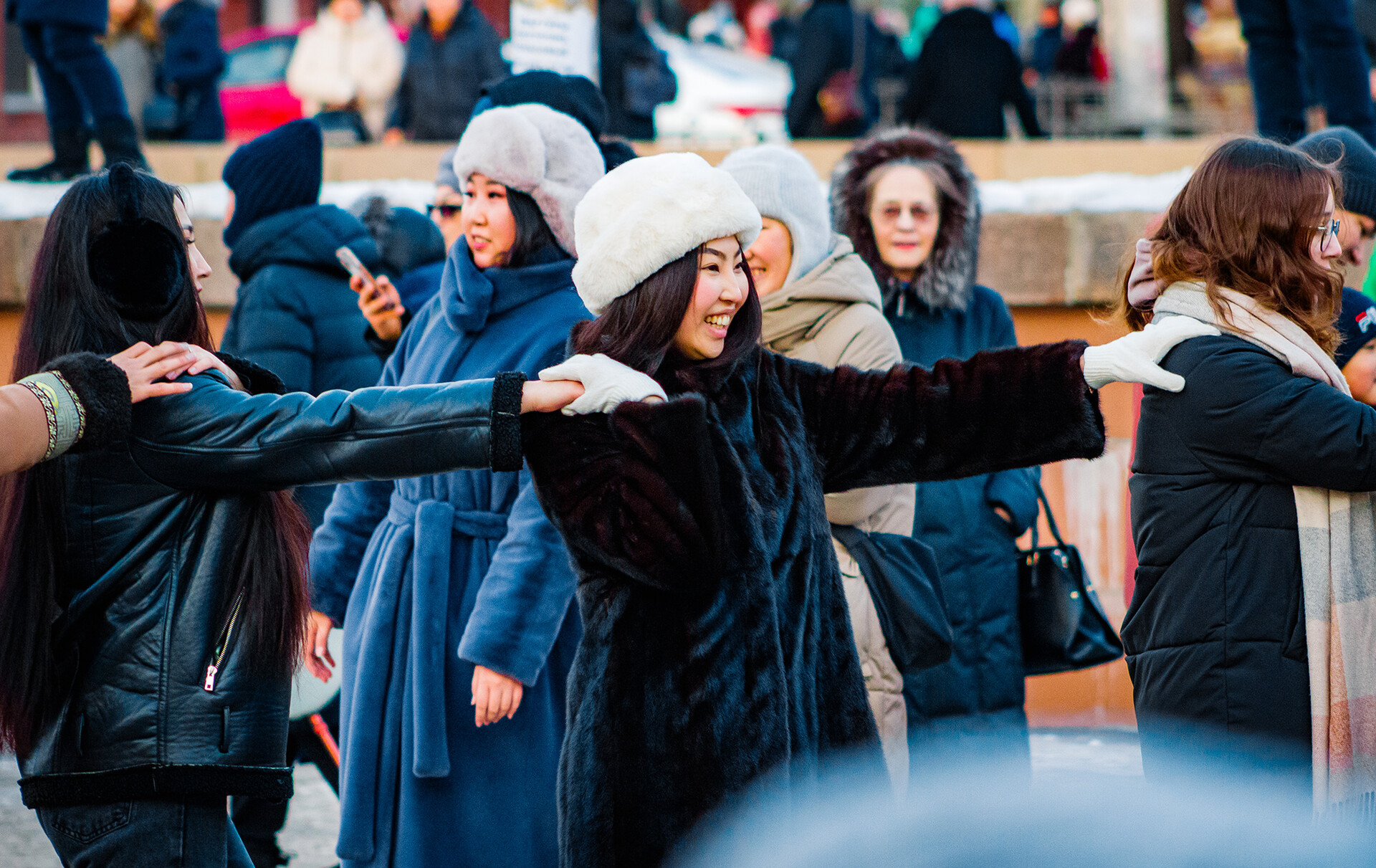
This ancient Buryat dance is associated with the movement of the Sun. It is believed that there are eight main types of ‘yokhor’, which are danced in different areas where Buryats live. And, at such city festivals, the hosts usually try to teach everyone different kinds. They differ in melodies and types of jumps and hops. It's impossible to remember them all at once!

"Our ‘yokhor’ gathered the largest number of people in the three years since the pandemic. There were five laps!” Olesya Polunina, Minister of Culture of the Irkutsk Region, told us. “I danced myself and got such a colossal pleasure! I felt that I discharged a lot of energy and took twice as much. Such a charge!"
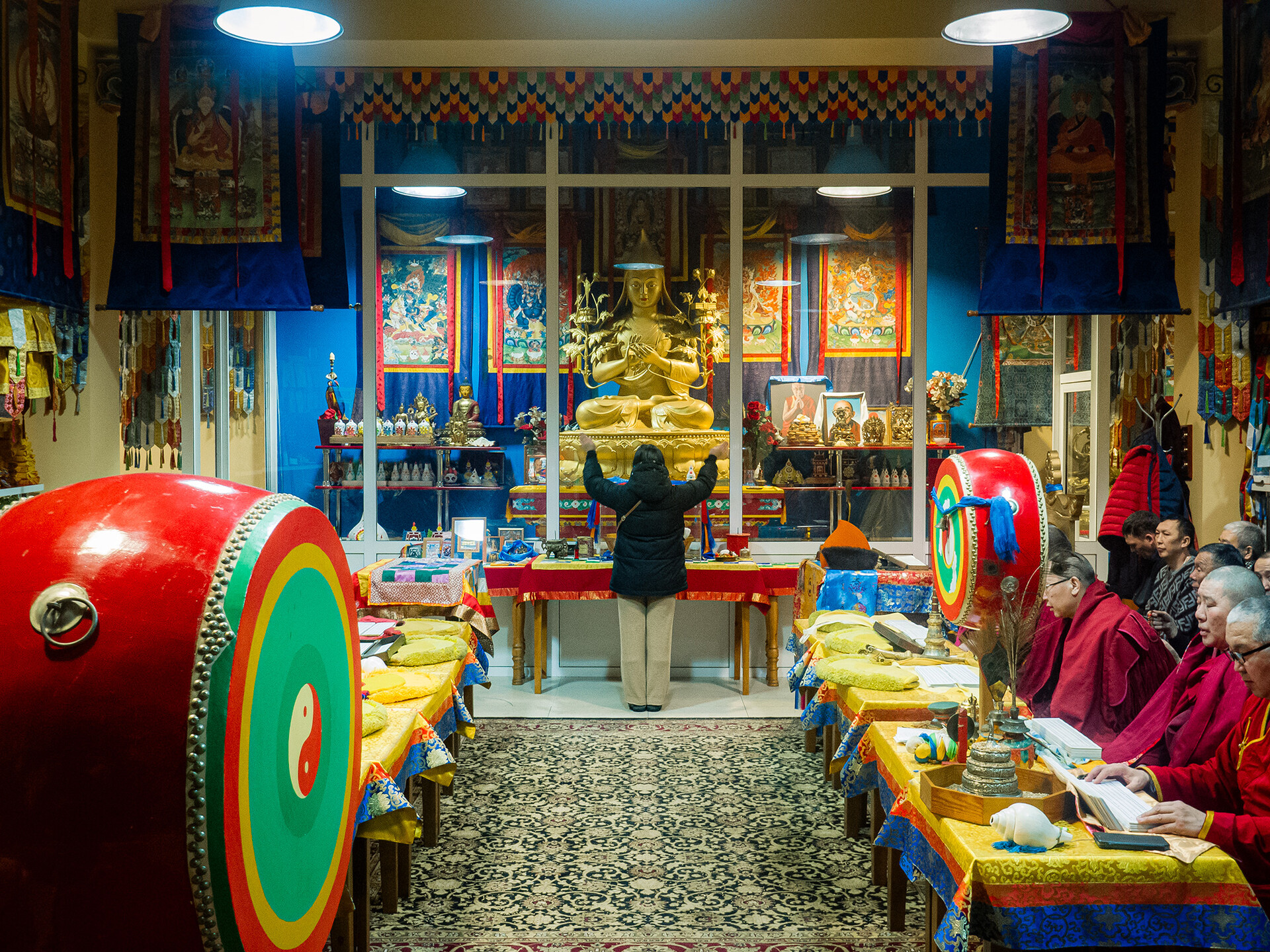
Night service in the datsan.
Pavel KuzmichevThe Buryats, as we were told in the Irkutsk ‘datsan’, combine Buddhism with shamanism and folk rituals. And the coming of the ‘Sagaalgan’ folk holiday today is inseparable from the religious part.
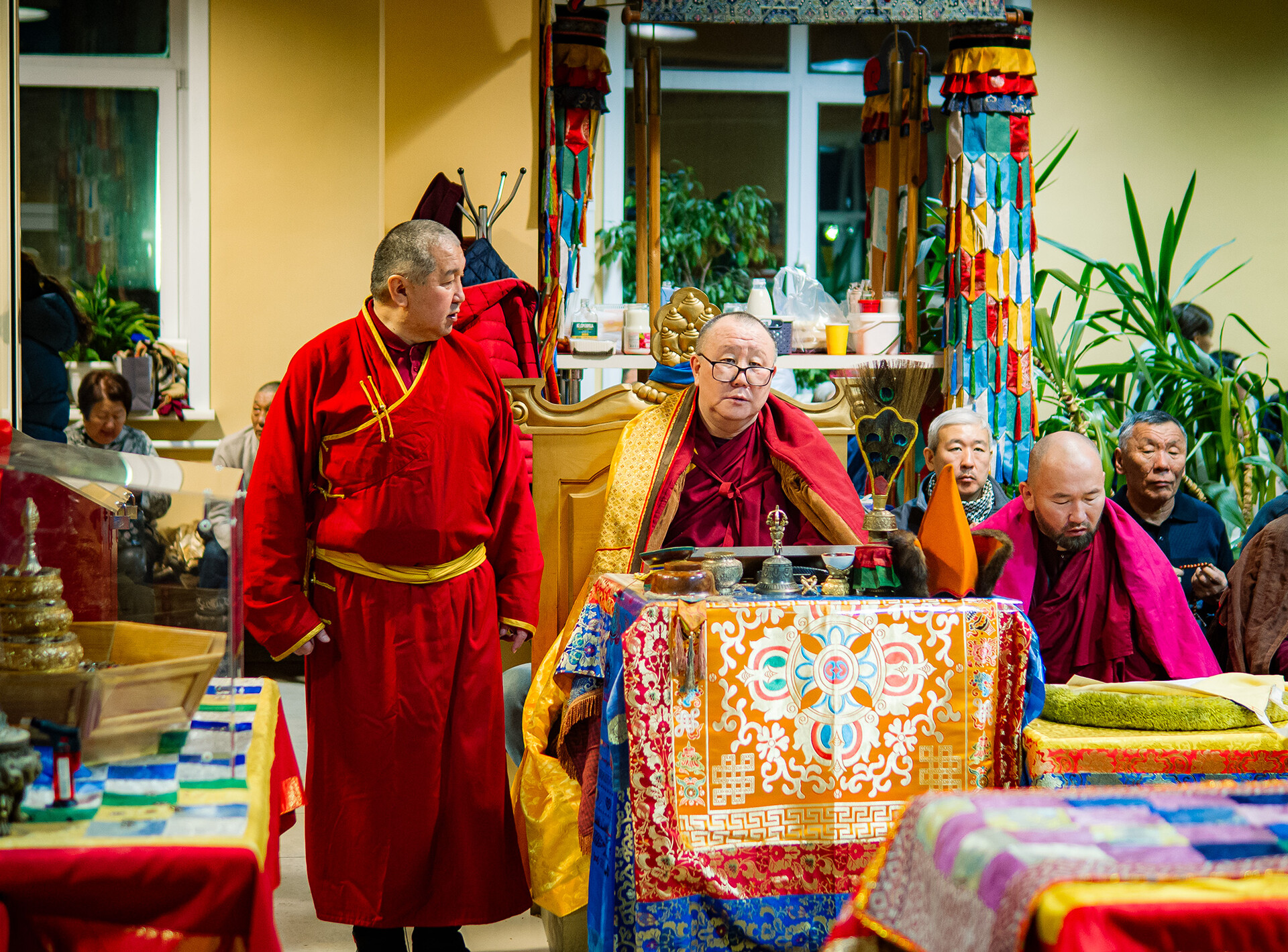
It is necessary to pay special attention to cleanliness and it is not only about the cleanliness of the house, but also about purity of thoughts and karma. At the Irkutsk ‘datsan’ on the night from February 8 to 9, there was a rite of purification called ‘Dugzhuub’. All negative things were burned in pyramid-shaped fires known as ‘Sor’ (sometimes written ‘Soor’) under prayers.
A few days before the ‘White Month’, lamas in the datsan hold special services (‘khurals’). We visited the main one, which started at 10 pm on February 9 and lasted until 6 am.

The service was dedicated to the goddess Baldan Lhamo, who is considered a protector of people and a deity who heals from diseases. At dawn, she circles the Earth, blessing every living thing. And the New Year begins.
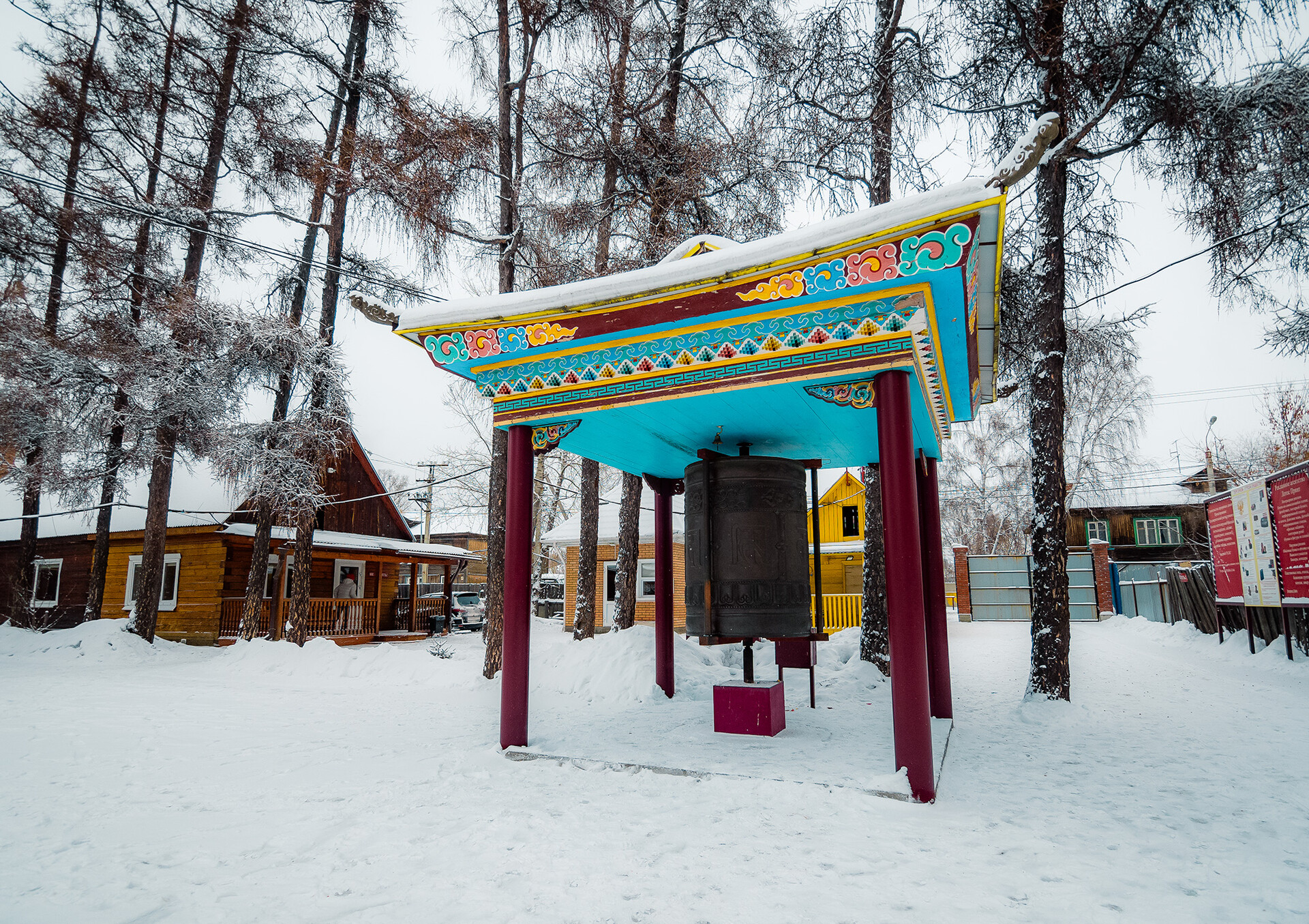
A prayer drum in a datsan.
Pavel KuzmichevDear readers,
Our website and social media accounts are under threat of being restricted or banned, due to the current circumstances. So, to keep up with our latest content, simply do the following:
If using any of Russia Beyond's content, partly or in full, always provide an active hyperlink to the original material.
Subscribe
to our newsletter!
Get the week's best stories straight to your inbox